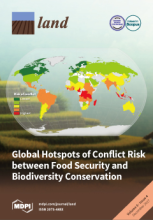Land Library
Bem-vindo à Biblioteca do Land Portal. Explore nossa vasta coleção de recursos de acesso aberto (mais de 74.000), incluindo relatórios, artigos de revistas científicas, trabalhos de pesquisa, publicações revisadas por pares, documentos jurídicos, vídeos e muito mais.
/ library resources
Showing items 1 through 9 of 114.Mobilising under-utilised low carbon (ULC) land for future agricultural expansion helps minimising further carbon stock loss.
This paper develops a framework for improved mainstreaming of ecosystem science in policy and decision-making within a spatial planning context.
Where rights over natural resources are contested, the effectiveness of conservation may be undermined and it can be difficult to estimate the welfare impacts of conservation restrictions on local people.
Forest conversion in the tropics is increasingly driven by global demand for agricultural forest-risk commodities such as soy, beef, palm oil and timber.
In several regions in Europe, the horse is becoming a common grazer on semi-natural and cultivated grasslands, though the pasturing benefits for animals and biodiversity alike are not universally appreciated.
In dryland Africa, access to land and water resources are central to pastoral livelihood activities. Policy intervention in these regions represents the outcome of concerted post-independence processes in which countries have committed to land tenure transformation as a policy objective.
In the Mongolian Plateau, the desert steppe, mountains, and dry lake bed surfaces may affect the process of dust storm emissions.
The global challenges of food security and biodiversity are rarely addressed together, though recently there has been an increasing awareness that the two issues are closely related.
It has been suggested that agricultural land use change and modernization in agricultural production techniques are related to the loss of crop diversity.


